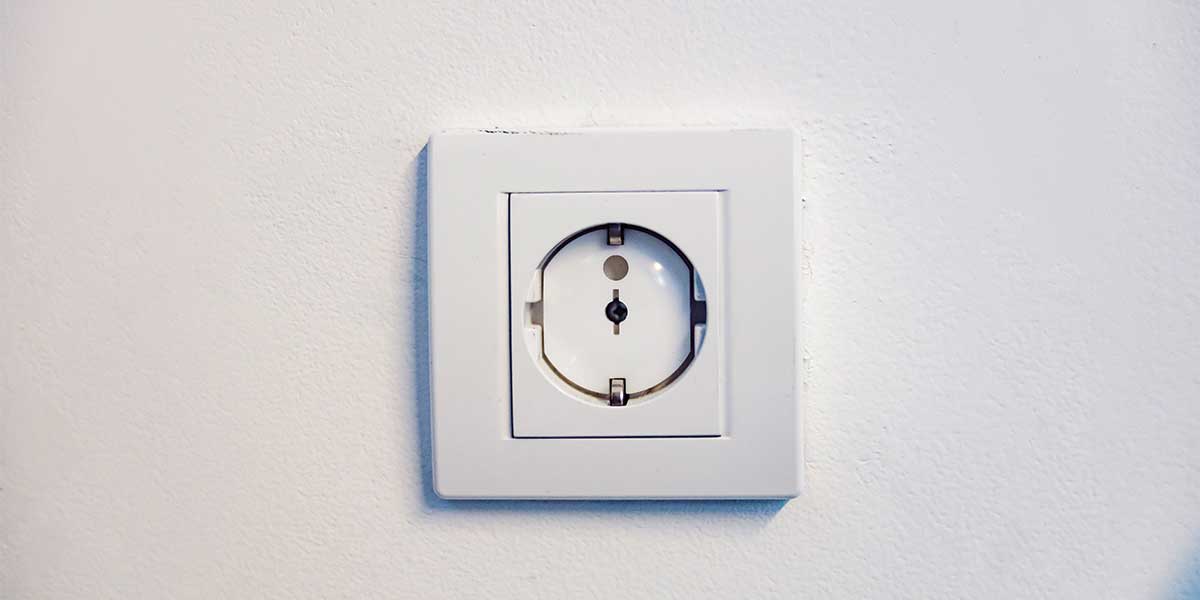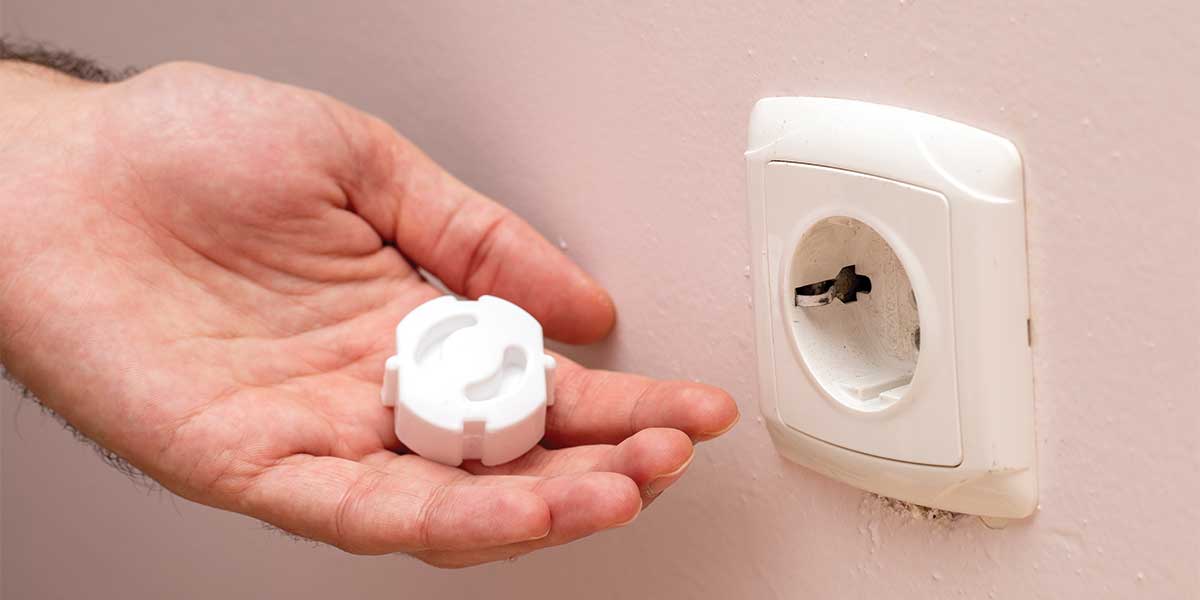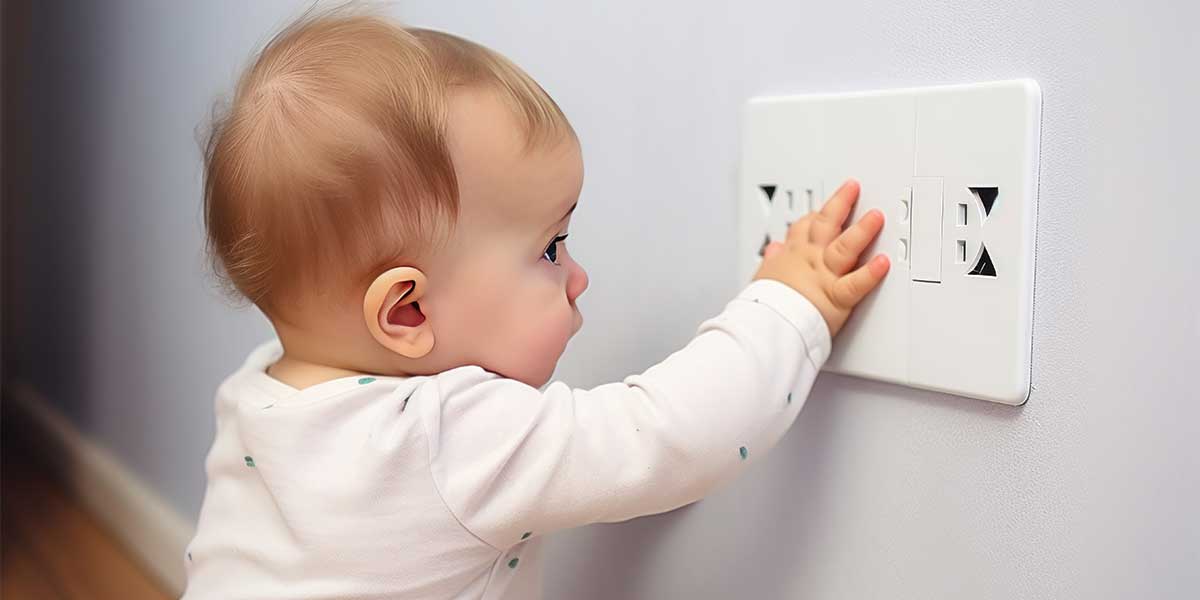Childproofing is about more than just outlet covers and baby gates, it’s about creating a safe environment that protects your child from the often-overlooked dangers of electricity. At Expert Electric, we believe your home should be a haven, free from electrical hazards that could put your little ones at risk.
This guide provides practical, licensed electrician tips for childproofing your home. With the right precautions, tools, and a bit of professional insight, you can significantly reduce the risk of electrical accidents and enjoy peace of mind as your children explore and grow.
Why Electrical Childproofing Is Essential
Children are naturally curious, and their instinct to touch and explore can lead to serious dangers, especially around electricity. Each year, thousands of children are injured from sticking objects into outlets, pulling cords, or playing near appliances.
Electrical safety starts with awareness. A licensed electrician can identify hidden risks and offer targeted solutions to keep your home safe. Whether you’re welcoming a newborn or adjusting to a toddler’s growing mobility, these tips are designed to help you stay one step ahead.

icensed Electrician Tips: Childproofing Your Home
1. Conduct a Room-by-Room Safety Inspection
Start by surveying your home from a child’s perspective. Get down on your hands and knees and examine each room, especially areas where your children play and sleep. Pay attention to:
- Wall outlets, particularly those near the floor
- Loose or frayed power cords
- Power strips and extension cords within reach
- Unused appliances plugged into sockets
- Light switches and exposed wiring
- Appliances near water sources
Inspecting thoroughly helps you prioritize what needs immediate attention. Make a checklist and address hazards one by one.
2. Install Tamper-Resistant Receptacles (TRRs)
Tamper-resistant receptacles are designed with spring-loaded shutters that prevent foreign objects from entering. Unlike plastic outlet caps, TRRs provide long-term, built-in protection and are now a requirement under the Canadian Electrical Code for all new homes.
If your home was built before this regulation, a licensed electrician from Expert Electric can easily replace your current outlets with TRRs, adding an essential layer of safety.
To learn more about how electricity can pose risks to children and what products support safe use, see the Canada Safety Council’s electrical safety program for youth.
3. Cover Outlets With Safety Plates or Caps
For homes without TRRs, plastic outlet caps or sliding safety plates are affordable and effective. They help prevent children from inserting fingers or metal objects into open outlets. Be sure to choose high-quality, child-resistant covers that fit snugly and are difficult to remove.
Sliding outlet plates are a more secure option, as they automatically close when the outlet is not in use.
4. Keep Electrical Cords Out of Reach
Dangling cords are tempting for children to pull on, which can dislodge plugs or cause heavy objects to fall. Secure cords using these methods:
- Run cords behind heavy furniture
- Use cord clips, sleeves, or raceways
- Tape cords along baseboards
- Bundle excess cord length with zip ties or cord shorteners
Avoid having cords running across floors or near cribs, playpens, or toddler beds.
5. Use Power Strip Covers
Power strips are often placed on the floor, making them easily accessible to children. Install power strip covers that encase the strip while allowing cords to exit through the sides. This prevents children from unplugging items or inserting objects into the sockets.
If you have to use power strips, keep them out of reach and always use a cover to minimize risk.

6. Eliminate Extension Cord Use Where Possible
Extension cords are not meant for permanent use, especially in areas accessible to children. If you must use one temporarily, ensure it is:
- Covered with a heavy-duty cord protector
- Placed out of reach and away from walkways
- Not run under carpets or rugs
For more permanent needs, consider having a licensed electrician install additional outlets.
7. Replace or Repair Faulty Outlets
Outlets that are loose, discolored, warm to the touch, or make buzzing noises should be addressed immediately. These are signs of wear or underlying electrical issues that can lead to shocks or fires.
Replacing damaged outlets with tamper-resistant models not only improves safety but also brings your home up to code.
8. Install Ground Fault Circuit Interrupters (GFCIs)
GFCIs are essential in areas where water and electricity could come into contact, such as kitchens, bathrooms, garages, basements, and outdoor areas. These devices monitor the flow of electricity and shut off power if a ground fault is detected.
If your home lacks GFCIs in key locations, a licensed electrician can upgrade your outlets. This is one of the most effective steps in reducing the risk of shock.
9. Unplug Appliances When Not in Use
Small appliances like blenders, toasters, curling irons, and heaters should always be unplugged when not in use. Children may try to play with these items or pull on the cords, risking burns or electric shock.
Store appliances out of reach and keep cords tucked away. Avoid leaving plugged-in devices unattended, especially in bathrooms or kitchens.
10. Schedule a Professional Home Electrical Safety Inspection
The most thorough way to ensure your home is childproofed is to schedule a full safety inspection with a licensed electrician. Expert Electric provides comprehensive home inspections that evaluate:
- Outlet and switch conditions
- Circuit breaker safety
- Wiring age and performance
- Power strip and extension cord use
- Grounding and bonding systems
- Compliance with current electrical codes
We provide personalized recommendations and can complete upgrades on the spot.
For more information about electrical safety tailored to children’s health and well-being, visit HealthLink BC’s guide on electrical safety for children.
FAQs: Childproofing with a Licensed Electrician
Do I need a licensed electrician to install tamper-resistant outlets?
Yes. A licensed electrician ensures safe installation and guarantees that your outlets meet code standards. They can also assess if additional wiring or circuit upgrades are needed.
What’s safer: outlet covers or tamper-resistant outlets?
Tamper-resistant outlets are safer and more reliable. They offer permanent protection, unlike removable covers that can become a choking hazard or be pried off.
Are GFCI outlets required in all bathrooms and kitchens?
Yes. The Canadian Electrical Code mandates GFCI protection in areas exposed to moisture. Older homes may not be compliant, but a licensed electrician can upgrade your system easily.
Can I install outlet covers and cord organizers myself?
Yes, basic childproofing tools like outlet caps and cord organizers are easy to install. However, for more technical solutions—like replacing outlets or adding GFCIs—it’s best to hire a licensed electrician.
How often should I have my home’s electrical system inspected?
We recommend every 3–5 years or sooner if you’ve recently moved, are renovating, or have young children in the home. Safety standards evolve, and it’s essential to stay up to date.
Final Thought: Make Electrical Safety a Priority
There’s no substitute for peace of mind when it comes to your child’s safety. While furniture anchors and stair gates are important, they don’t protect against the hidden dangers of electricity. By following these licensed electrician tips for childproofing your home, you take a critical step toward protecting your family.
Expert Electric is proud to serve families across the Lower Mainland with electrical solutions that are safe, smart, and reliable. Our team is here to assess, advise, and implement the changes that keep your home safe for everyone, especially the smallest members of your household.
Contact Expert Electric
Phone: 604-681-8338
Email: info@expertelectric.ca
Looking to childproof your home with professional guidance? Contact Expert Electric today to schedule a home safety inspection or consultation. Let’s make your home a safe, joyful place to grow.


